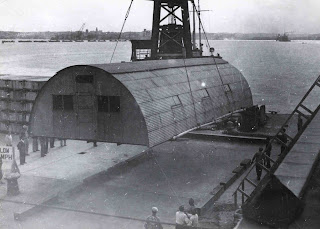Shifting ground
In Shifting Ground, Frazer Ward says that streets have anonymity and the physical street as a highway, not necessarily a highway but a network for information and people interaction.
The decollage went to the street to reclaim a form of specifically public expression. The ads were meant to be public when they were first put up. So for it to be reclaimed and then to be affixed on the street anonymously, just as they were first put up.
“The experience of the street was conditioned by the images and various forms of publicity.”
Ward mentions that Moses was a czar, which was humorous but true. Moses didn’t care about the people using the space quite as much as how much he can get people to move through the space quickly.
Ward introduces fluxus. I honestly was unaware of this until now, however it somewhat links in DADAism.
 Fluxus—a name taken from Latin word meaning "to flow"—is an international network of artists, composers and designers noted for blending different artistic media and disciplines in the 1960s.
Fluxus—a name taken from Latin word meaning "to flow"—is an international network of artists, composers and designers noted for blending different artistic media and disciplines in the 1960s.In Yoko Ono’s Rape, a camera crew follows a woman, Majiate, through her time and basically chases her into her apartment. "No one in the street appears to pay the slightest attention to her plight.”
 |
| George Maciunas Manifesto |
This adds to the anonymity of the street. The film “represent(s) the street as the site of disciplinary surveillance, which, in pursuing Majiate into her apartment, obliterates the distinction between public and private realms.”
Ward was careful when he juxtaposed the two words “Voyeurism/surveillance” the juxtaposition of these makes
There are thousands of people on the street and the entire duration of this woman is being chased, no one seems to care.
“The conceptions of the street that evolved from the intertwined phenomena of protest culture and counterculture.”
FLUXUS TANGENT an article by George Macuinas.
Powers of Removal
Lytle Shaw Spans a few things from performance art that may possibly fit as fluxus to a more contemporary version of flaneur.
“Afterwards, outside, again and again. the powers of removal struck me as looming awfully… the newest mass of multiplied floors and windows visible at this point. They ranged in this terrible erection, were going to bring in money-and was not money the only thing a self-respecting structure could be thought” Henry James’s film, illustrated the reconstruction and reuse of space to transform what we use it for. James points out in the writing of his piece that the building upwards is horrifying.
“de Certeau's previously quoted "Walking in the City, "In the dream of vertical ascent and hovering flight, we glimpse the cartographer's view, a fictional disembodied eye suspended high in the air. But as soon as we follow one line, or one river, and not another, a journey emerges” He describes what would be paths and borders. Recognizable landmarks that we orientate ourselves to get through the city.
Jimbo Blachly's About 86 Springs. Blanchly explores a guide to the springs of Manhattan from 100 years previous to his exploration. The result is a remapping of the city through the medium of the walk a remapping that combines the kind of urban taxonomy mentioned above with a more explicitly perlative dimension. As de Certeau says: "The long poem of walking manipulates spatial organizations, no matter how panoptic they may be."
 |
| Adrian Piper, Mythic Talk |





